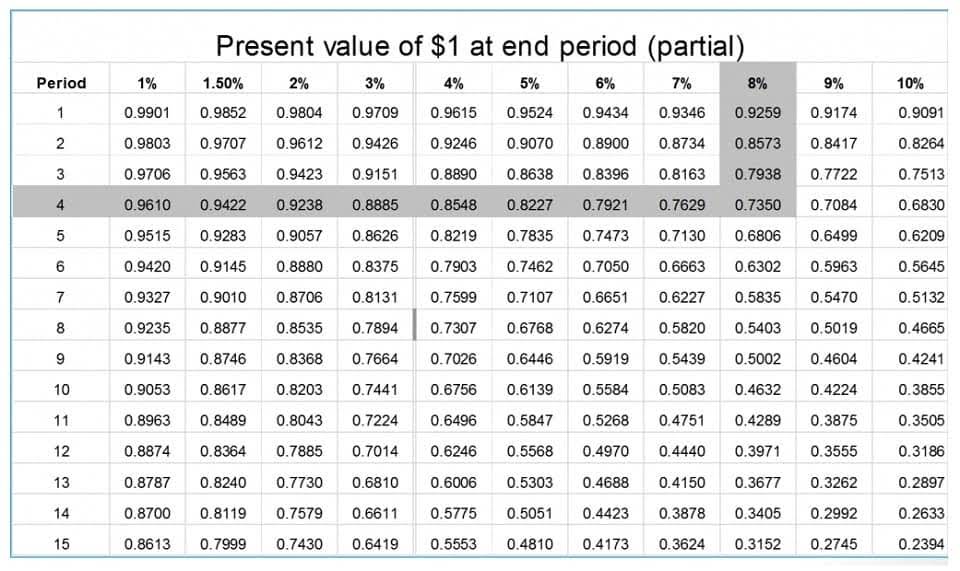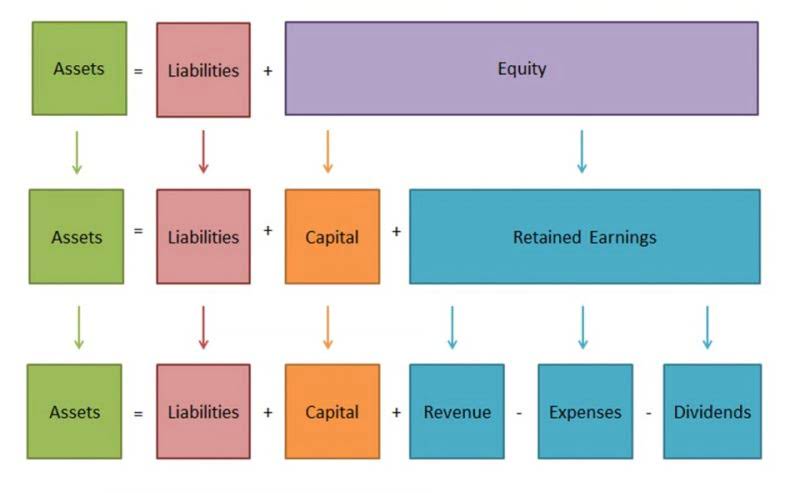As the business does not have to pay a dividend, there is no liability until there is a dividend declared. As soon as the dividend has been declared, the liability needs to be recorded in the books of account as a dividend payable. You have just obtained your MBA and obtained vintage yellow accounting practice forms your dream job with a large corporation as a manager trainee in the corporate accounting department. Briefly indicate the accounting entries necessary to recognize the split in the company’s accounting records and the effect the split will have on the company’s balance sheet.
- A stock dividend distributes shares so that after the distribution, all stockholders have the exact same percentage of ownership that they held prior to the dividend.
- When they declare a cash dividend, some companies debit a Dividends account instead of Retained Earnings.
- The credit entry to dividends payable represents a balance sheet liability.
- Shareholders are typically entitled to receive dividends in proportion to the number of shares they own.
This usually happens with companies that do not bother to keep a record of the dividend declared and paid. In this journal entry, as the company issues the small stock dividend (less than 20%-25%), the market price of $5 per share is used to assign the value to the dividend. Likewise, the common stock dividend distributable is $50,000 (500,000 x 10% x $1) as the common stock has a par value of $1 per share.
Statement of retained earnings is a report that reconciles the retained earnings of a company at the start of an accounting period to retained earnings at the end of the accounting period. It reports figures for any adjustment to opening retained earnings, net income or net loss for the period and cash dividends or stock dividends (i.e. bonus shares). The company’s board of directors has announced the dividend payment after a month. The company has the obligation to make payments to shareholders based on the dividend declaration. On the dividend payment date, the cash is paid out to shareholders to settle the liability to them, and the dividends payable account balance returns to zero.
Small stock dividend example
Dividend record date is the date that the company determines the ownership of stock with the shareholders’ record. The shareholders who own the stock on the record date will receive the dividend. The entry will reduce the cash balance used to settle the accrued dividend payable. Dividends are not guaranteed, and they can be reduced or eliminated if the corporation’s profitability declines. However, many corporations have a long history of paying dividends, and shareholders often expect to receive them on a regular basis.
Retained earnings belong to the shareholders of the company and the company’s board of directors can decide to pay them out as dividends, in part or whole. Well established companies often pay dividends to their stockholders on regular basis. However, the students should keep in mind that no dividends payable liability comes into existence in a period unless and until the board of directors actually authorizes and declares the dividends in that period. In this case, the company needs to make the journal entry for the dividend received by debiting the cash account and crediting the stock investments account instead. In this case, the company can make the dividend received journal entry by debiting the cash account and crediting the dividend income account. On the other hand, if the company owns between 20% to 50% shares of stock of another company, it needs to record the dividend received as a reduction of its stock investments on the balance sheet.
Example & journal entries
The cash dividend declared is $1.25 per share to stockholders of record on July 1, (date of record), payable on July 10, (date of payment). Because financial transactions occur on both the date of declaration (a liability is incurred) and on the date of payment (cash is paid), journal entries record the transactions on both of these dates. The Dividends Payable account appears as a current liability on the balance sheet.
Members of a corporation’s board of directors understand the need to provide investors with a periodic return, and as a result, often declare dividends up to four times per year. However, companies can declare dividends whenever they want and are not limited in the number of annual declarations. They are not considered expenses, and they are not reported on the income statement. They are a distribution of the net income of a company and are not a cost of business operations.
Conversely, if a preferred stock is noncumulative, a missed dividend is simply lost to the owners. It has no impact on the future allocation of dividends between preferred and common shares. When the dividend is declared by the board, the date of record is also set. All shareholders who own the stock on that day qualify for receipt of the dividend. The ex-dividend date is the first day on which an investor is not entitled to the dividend. A stock dividend distributes shares so that after the distribution, all stockholders have the exact same percentage of ownership that they held prior to the dividend.
Adjusted retained earnings
The company is required to record the liability when the board of directors declares the dividend. Dividend payables are posted to accounting books as either current liabilities or non-current liabilities, depending on when the shareholder is expecting to receive payment. If a shareholder expects to receive a payment within one year, then it is classified as a current liability. If a shareholder expects to receive payment after one year, then it is classified as a long-term liability. A dividend is typically a percentage of the shareholder’s investment, but it can also be a fixed amount.
Practice Question: Dividends
On the distribution date of the stock dividend, the company can make the journal entry by debiting the common stock dividend distributable account and crediting the common stock account. Since the cash dividends were distributed, the corporation must debit the dividends payable account by $50,000, with the corresponding entry consisting of the $50,000 credit to the cash account. These omitted or undeclared dividends are usually termed as dividends in arrears on cumulative preferred stock and are normally presented in the foot notes to the company’s balance sheet. Another acceptable means of disclosure of dividends in arrears on cumulative preferred stock is to parenthetically report them in capital stock section of company’s balance sheet. For example, on December 18, 2020, the company ABC declares a 10% stock dividend on its 500,000 shares of common stock. Its common stock has a par value of $1 per share and a market price of $5 per share.
However, the corporation does make a journal entry to record the issuance of a stock dividend although it creates no impact on either assets or liabilities. The retained earnings balance is decreased by the fair value of the shares issued while contributed capital (common stock and capital in excess of par value) are increased by the same amount. The existence of a cumulative preferred stock dividend in arrears is information that must be disclosed in financial statements. Only dividends that have been formally declared by the board of directors are recorded as liabilities.
Free Financial Modeling Lessons
Therefore, cash dividends reduce both the Retained Earnings and Cash account balances. A company that lacks sufficient cash for a cash dividend may declare a stock dividend to satisfy its shareholders. Note that in the long run it may be more beneficial to the company and the shareholders to reinvest the capital in the business rather than paying a cash dividend. If so, the company would be more profitable and the shareholders would be rewarded with a higher stock price in the future. Later, on the date when the previously declared dividend is actually distributed in cash to shareholders, the payables account would be debited whereas the cash account is credited. A dividend is a distribution of a portion of a company’s earnings, decided by its board of directors, to a class of its shareholders.
Hence, the company needs to account for dividends by making journal entries properly, especially when the declaration date and the payment date are in the different accounting periods. The company accrued dividends when the board of directors made an official announcement to the public. The best example of an accrued dividend is when a company declares its shareholders a quarterly or yearly dividend, but the actual cash for payment is not paid until the following quarter or year. Similarly, shareholders who invest in companies are typically driven by two factors—a desire to earn income in the form of dividends and a desire to benefit from the growth in the value of their investment.
The carrying value of the account is set equal to the total dividend amount declared to shareholders. Once a proposed cash dividend is approved and declared by the board of directors, a corporation can distribute dividends to its shareholders. The transaction will reduce the company accumulated profit which is the retained earnings on the balance sheet.
On the day the board of directors votes to declare a cash dividend, a journal entry is required to record the declaration as a liability. When the company makes the dividend payment to the shareholders, it can make the journal entry by debiting the dividends payable account and crediting the cash account. Cash dividends are earnings that companies pass along to their shareholders. A company’s board of directors has the power to formally vote to declare dividends. The date of declaration is the date on which the dividends become a legal liability, the date on which the board of directors votes to distribute the dividends.






